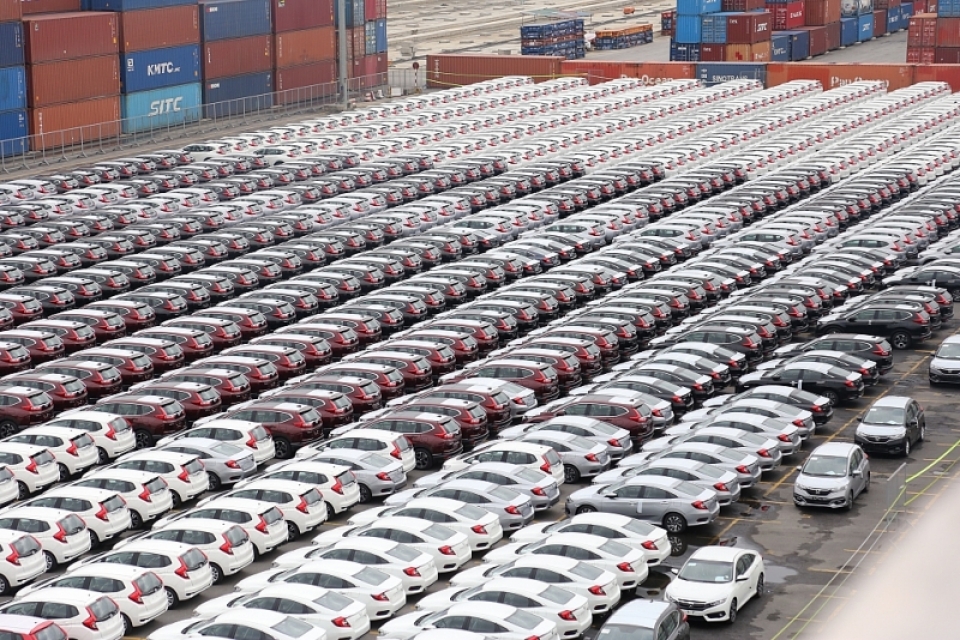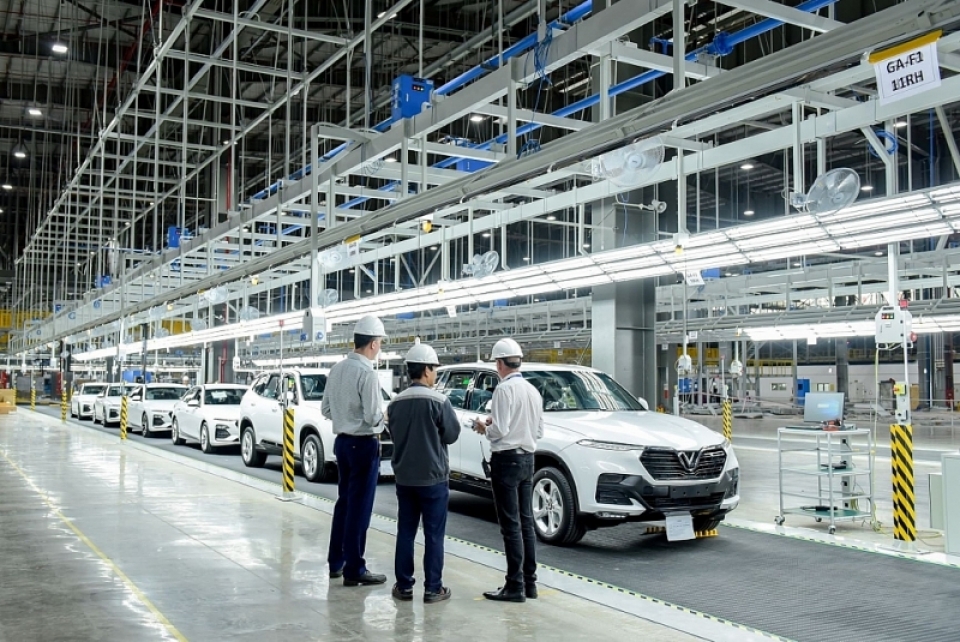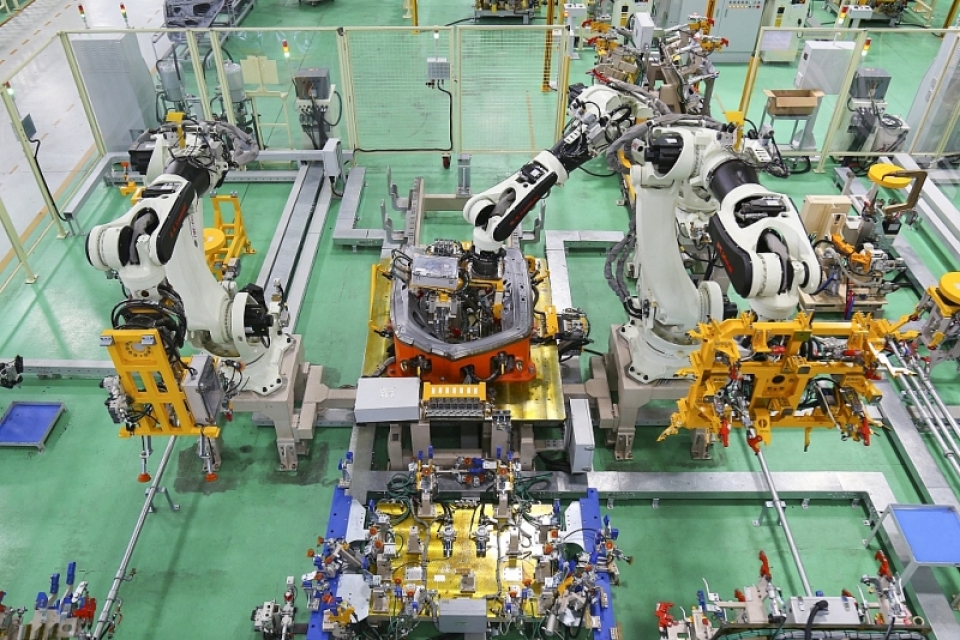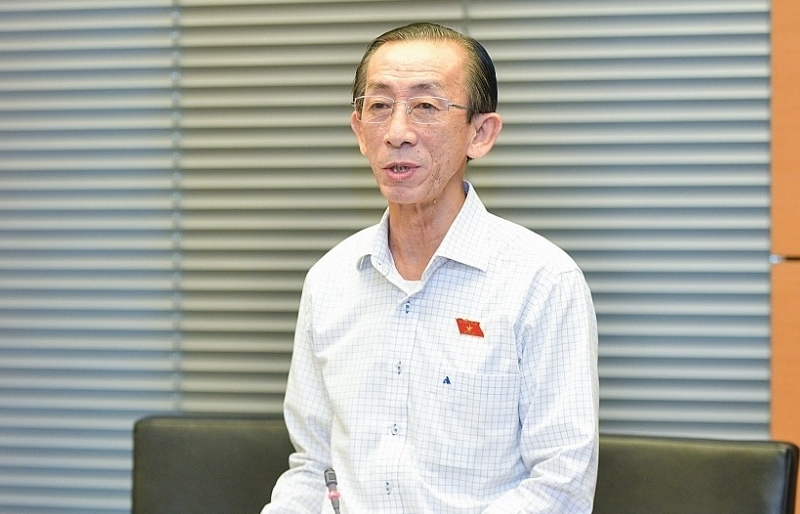Where is the Vietnamese automobile on the world map of automobile industry?
| HCM City Customs: Revenue collected from many imported items achieve positive results | |
| Imported cars increase, domestic car production declines | |
| Without support, automobile production will decline |
 |
| A large number of imported cars enjoying preferential tax rate of 0 percent are making difficulties for domestic manufacturing enterprises. Photo: Nguyen Ha |
Behind regional countries about 30 years, when Vietnam laid the first bricks to build the automobile industry, in other countries, it has been very developed. After more than 20 years of development, along with the Government's encouraging policies and the efforts of firms, the Vietnamese automobile industry has recorded some achievements.
However, Vietnam's automobile industry still has many limitations. Finding solutions to develop the supporting industry to promote the development of the domestic automobile industry was discussed at the Supporting Industry Forum with the theme of Vietnamese firms participating in the global automobile production chain, held by the Ministry of Industry and Trade in coordination with Youth newspaper of Ho Chi Minh City on November 28.
Join the low segment of the value chain
At the forum, Pham Tuan Anh, Deputy Director of the Industry Department (Ministry of Industry and Trade), said so far, Vietnam has not had any leading enterprises in the production chain equivalent to regional level in the automobile manufacturing and assembly industry.
He said the Vietnamese automobile industry is currently only involved in the low segment of the value chain, which is highly dependent on the manufacturing assignments of global automobile corporations and does not master core technologies such as motors, control systems and transmission systems.
 |
| Investing in the most modern automobile factory in the world, Vinfast is selling their products at a loss of hundreds of millions of dong. Photo: Nguyen Ha |
After several decades of development, the domestic manufacturing and assembly industry have not met the standards of the real automobile industry. The localisation rate for individual cars in Vietnam is much lower than the target (40 percent in 2005, 60 percent in 2010, but the actual rate is only 7- 10 percent).
The leader of the Industry Department also pointed out many Vietnamese automobile assembly firms are going on a path that other countries gave up, the trend of self-supply, exclusiveness and circleness in automobile manufacturing
At present, several enterprises in internal supply chains of each company are being formed but mainly as parent companies, the number of members in the chain is insignificant and has not yet developed into production networks as an independent firm which has a business cooperation relationship based on a long-term contract.
Outdated technology
At the forum, the Ministry of Industry and Trade's report showed the supporting industry in the automobile industry is still fragmented and the relationship between assemblers and suppliers is loose.
Especially, links between supporting and assembling enterprises, between domestic enterprises and "big names" FDI is very limited. Domestic automobile assemblers are mostly newly established and lack experience in developing supporting industry and attracting investors.
Most of these supporting industry enterprises are incapable of or struggle to fully meet stringent requirements for quality, specifications, materials, and delivery time by foreign companies. Not to mention, many technology enterprises supporting the Vietnamese automobile industry also use outdated technologies, so their prices are high and their competitiveness is low, so automobile assemblers often seek foreign suppliers.
Restrictions from policies
Do Thang Hai, Deputy Minister of Industry and Trade, emphasised the important role of the supporting industry for the country's economic development. The Government also introduced many policies and solutions to encourage the development of supporting industry. However, development in this field has been limited.
In addition to the causes and limitations from businesses and industry associations, Hai also pointed out causes related to the state management, including the development of the strategies and plans to develop the automobile industry has not focused on feasibility when defining targets and the system of policies for the development of the supporting industry for the automobile industry is still inconsistent and, unstable. In addition the management and implementation of the planning and policies for the development of the supporting industry for the automobile industry is still limited.
The forum was also attended by representatives of a number of large automobile manufacturing firms in Vietnam such as Truong Hai Automobile Joint Stock Company, Thanh Cong Group Joint Stock Company, Toyota Vietnam Co., Ltd, Honda Vietnam Co., Ltd. and representatives of associations and enterprises producing spare parts and mechanical components.
 |
| In the last two years, a few businesses have invested in modern automobile manufacturing and assembly lines, but the policy constraints, market difficulties and competitiveness of imported products make them in trouble. Photo: Nguyen Ha |
A representative of Toyota Vietnam said the bgigest difficulty for the Vietnamese automobile industry is the small market size and low quantity. This makes production costs in Vietnam higher than other countries in the region, especially depreciation costs. In addition, due to low productivity, most manufacturers have to import completely knocked down (CKD) components to build cars. As a result, packaging, shipping and import duties are costly.
These enterprises have made recommendations to encourage the development of production of automobile components and spare parts, which are mainly related to tax and management policies. Specifically: free import tax on raw materials, supplies and auxiliary components to produce domestically-made components; Adjust excise tax for the part of localised value to enjoy preferences according to the domestically-made value and the value of domestically-made components; apply credit packages for development the supporting industry; include automobile products in the list of "high-tech products".
| Do Thu Hoang, Deputy General Director of Toyota Vietnam: Businesses need the Government to have policies to support the production of domestically-produced CKD cars in the context of the import tax rate on CBU cars of zero percent from 2018. Otherwise, businesses will gradually shift to importing CBU cars and the domestic production industry will faces survival. Pham Van Tai, General Director of Thaco: The Government should soon consider reducing the import tax on components to zero percent without any conditions in the context of the import tax on CBU cars of zero percent. |
Related News

Available foundations and drivers for strong economic growth
08:34 | 13/11/2024 Headlines

Accelerating green transformation for businesses
10:19 | 21/10/2024 Import-Export

Infrastructure obstacles hold back development of enterprises
15:31 | 20/10/2024 Import-Export

Accurately determining current state of public assets nationwide
16:29 | 21/08/2024 Finance
Latest News

Coffee exports set to hit 5.6 billion USD in 2024
15:34 | 29/11/2024 Import-Export

Hai Duong exports grapefruit to EU
15:31 | 29/11/2024 Import-Export

Commodity group expects to hit import turnover of US$100 billion
11:07 | 29/11/2024 Import-Export

US businesses increase shrimp imports ahead of tax hike
11:05 | 29/11/2024 Import-Export
More News

Ample room for Vietnam-Bulgaria economic, trade cooperation
14:04 | 28/11/2024 Import-Export

Peru’s mega-port to open opportunities for Vietnam's import-export, logistics
14:02 | 28/11/2024 Import-Export

7 key export groups bring in US$234.5 billion
13:54 | 28/11/2024 Import-Export

Import turnover of iron and steel hits billions of dollars
13:52 | 28/11/2024 Import-Export

The capital of wooden furniture exports has many opportunities for breakthroughs
13:50 | 28/11/2024 Import-Export

CEAP - new challenges for 7 Vietnam’s export sectors
13:43 | 28/11/2024 Import-Export

Việt Nam regulates remanufactured imports under EU, UK FTAs
14:22 | 26/11/2024 Import-Export

Rice exports top 8 million tonnes
14:20 | 26/11/2024 Import-Export

Vietnam's pepper exports surpass 1 billion USD in first 10 months
14:16 | 26/11/2024 Import-Export
Your care

Coffee exports set to hit 5.6 billion USD in 2024
15:34 | 29/11/2024 Import-Export

Hai Duong exports grapefruit to EU
15:31 | 29/11/2024 Import-Export

Commodity group expects to hit import turnover of US$100 billion
11:07 | 29/11/2024 Import-Export

US businesses increase shrimp imports ahead of tax hike
11:05 | 29/11/2024 Import-Export

Ample room for Vietnam-Bulgaria economic, trade cooperation
14:04 | 28/11/2024 Import-Export





